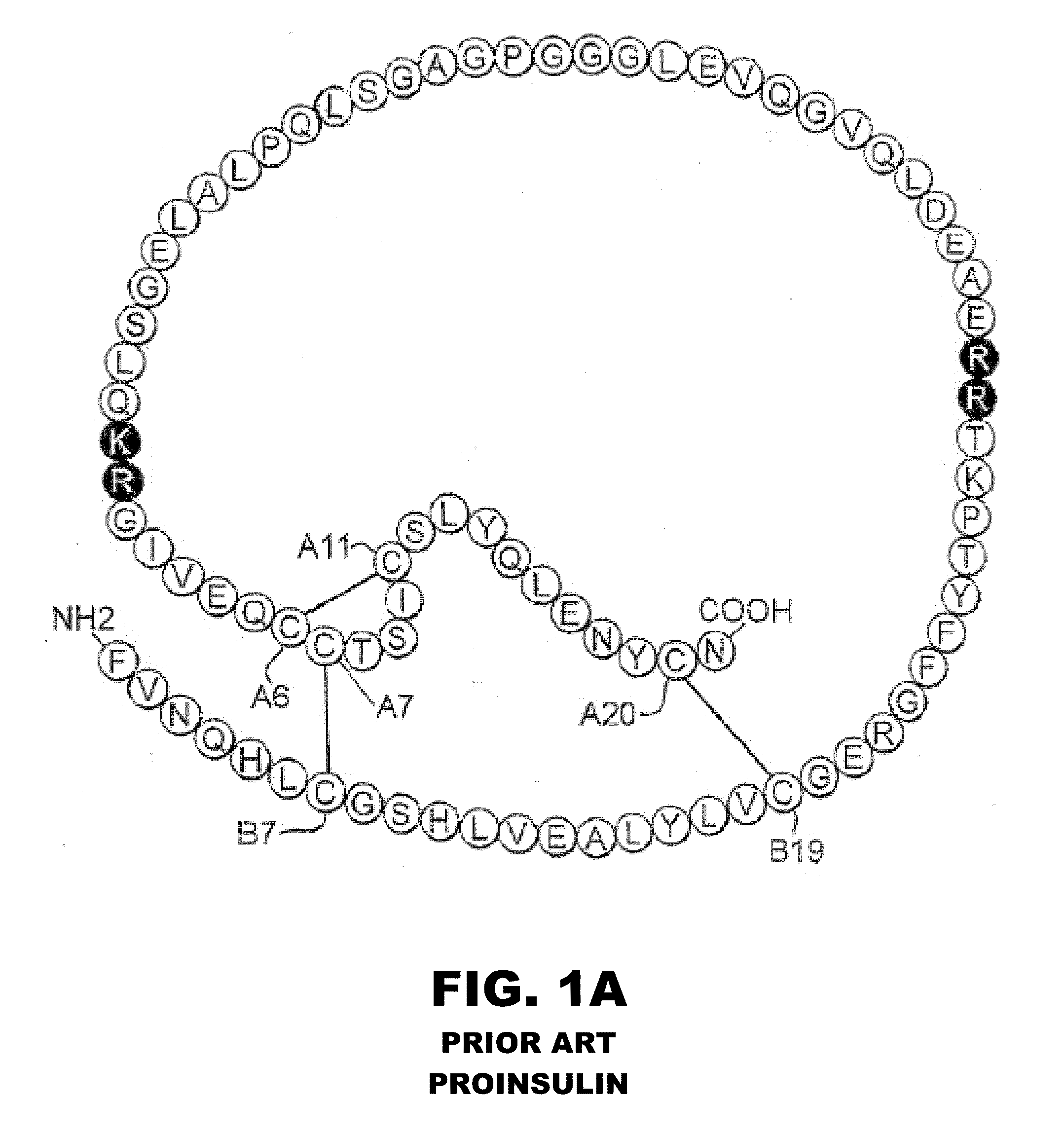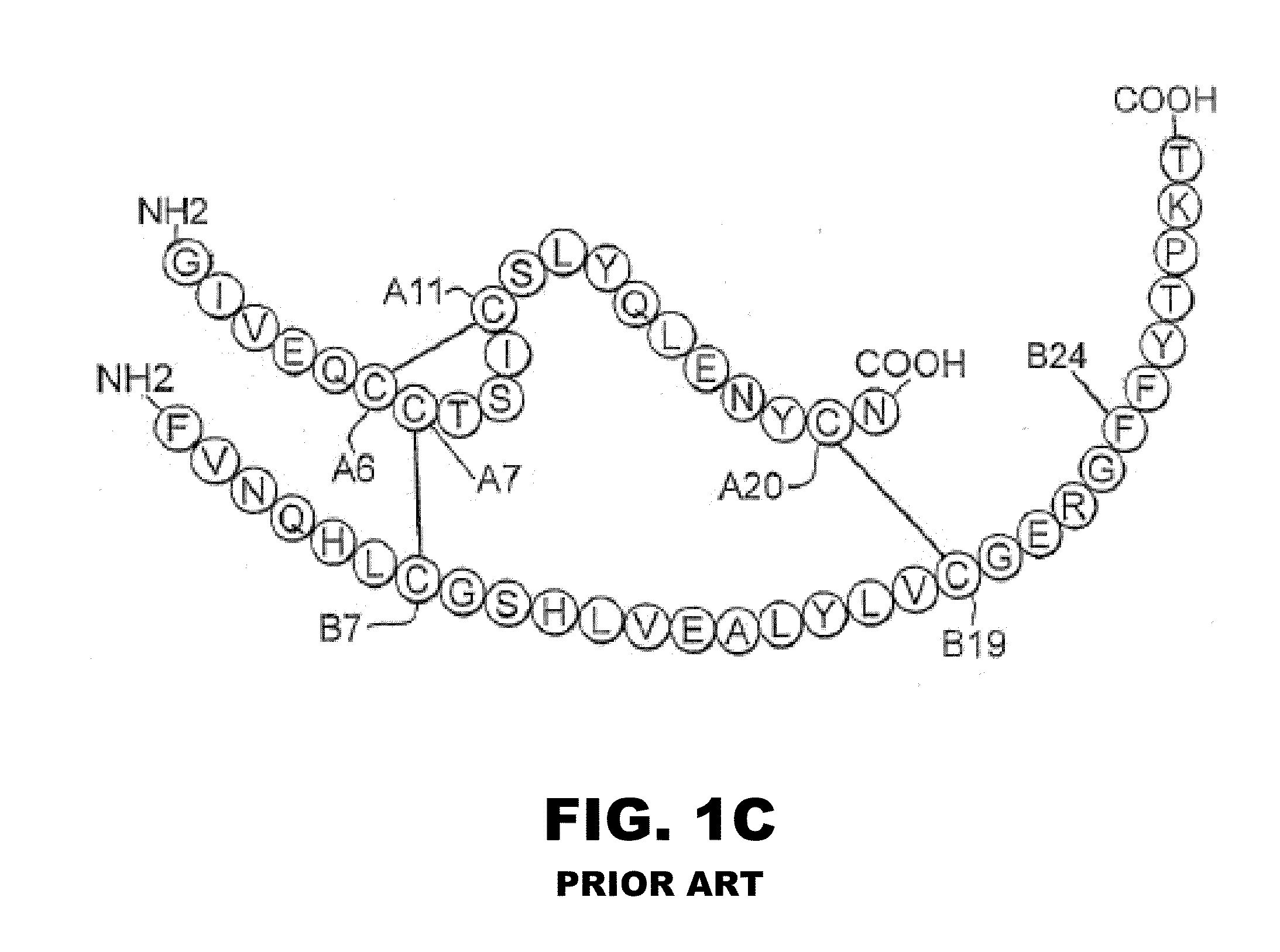Halogen-stabilized insulin
a technology of halogen-stabilized insulin and analogues, which is applied in the field of polypeptides, can solve the problems of inability to guarantee the stability of the modification in the hydrophobic environment, the most susceptible to fibrillation and most forms of chemical degradation, and achieve the effect of greater stability
- Summary
- Abstract
- Description
- Claims
- Application Information
AI Technical Summary
Benefits of technology
Problems solved by technology
Method used
Image
Examples
Embodiment Construction
[0058]The present invention is directed an insulin analogue that provides greater stability by halogen substitution in an amino acid, where the analogue than maintains at least a portion of biological activity of the corresponding non-halogenated insulin or insulin analogue. Particularly, the present invention provides insulin analogues that provides greater stability by substitution of a single halogen in an amino acid, where the analogue than maintains at least a portion of biological activity of the corresponding non-halogenated insulin or insulin analogue. In one example, the present invention provides an insulin analogue that provides greater stability by fluorine, chlorine or bromine substitution in an amino acid, where the analogue than maintains at least a portion of biological activity of the corresponding non-halogenated insulin or insulin analogue. One potential application is to augment the chemical and physical stability of an insulin analogue while retaining a portion ...
PUM
| Property | Measurement | Unit |
|---|---|---|
| pH | aaaaa | aaaaa |
| physiological temperature | aaaaa | aaaaa |
| temperatures | aaaaa | aaaaa |
Abstract
Description
Claims
Application Information
 Login to View More
Login to View More - R&D
- Intellectual Property
- Life Sciences
- Materials
- Tech Scout
- Unparalleled Data Quality
- Higher Quality Content
- 60% Fewer Hallucinations
Browse by: Latest US Patents, China's latest patents, Technical Efficacy Thesaurus, Application Domain, Technology Topic, Popular Technical Reports.
© 2025 PatSnap. All rights reserved.Legal|Privacy policy|Modern Slavery Act Transparency Statement|Sitemap|About US| Contact US: help@patsnap.com



